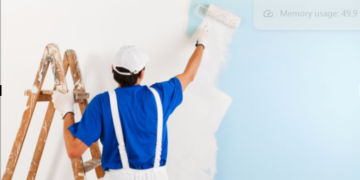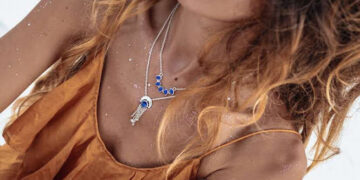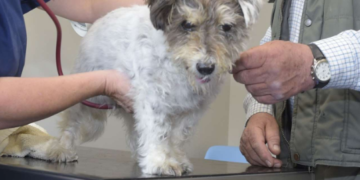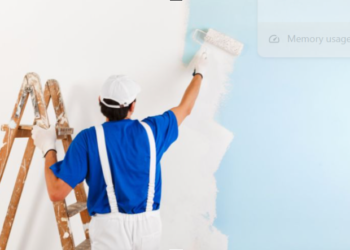Ever wondered if you can toss that cardboard container into the microwave? Well, buckle up for a quick ride through the kitchen maze! We’re diving into the “Can cardboard be microwaved?” dilemma, breaking it down in simple terms. Spoiler alert: It’s a yes, but there’s a twist. This blog is your guide to unravelling the secrets and making sure your microwave game is both savvy and safe. We’ll chat about the do’s, steer clear of the don’ts, and have you microwaving with confidence. So, before you hit ‘start’ next time, join us for the lowdown on microwaving cardboard – your kitchen adventures are about to level up!
Importance of understanding microwave safety
Keeping your kitchen safe is a top priority, and that includes using your microwave wisely. Beyond preventing accidents, it’s about making sure your food and the environment stay safe too. Know the basics – what works and what doesn’t. From picking the right containers to understanding packaging, this knowledge turns your microwave into a trustworthy kitchen helper. So, embrace it, and make your time in the kitchen both secure and stress-free!
Understanding Cardboard
1. Composition of cardboard
Cardboard is mostly made of compressed paper pulp, giving it strength and versatility. However, different cardboard may have additives, coatings, or recycled materials. Knowing these elements is crucial for figuring out if a particular cardboard is safe for the microwave, affecting how it handles heat and ensuring a secure cooking experience.
2 . Properties that may impact microwave safety
Microwave safety in cardboard hinges on factors like additives, coatings, and thickness. Additives, while boosting durability, may pose risks when microwaved. Coatings, often for moisture resistance, can act unexpectedly under microwave heat. Thickness matters too; thin cardboard might scorch, while thicker types may not heat uniformly. Understanding these properties ensures safe microwave use, helping users pick cardboard that works well with the appliance and avoids potential hazards.
What can you microwave?
You can microwave a variety of foods, including leftovers, vegetables, and pre-cooked meals. Microwave-safe containers made of glass, ceramic, and certain plastics are suitable. Additionally, reheating liquids and defrosting frozen items are common microwave uses, It’s crucial to avoid microwaving certain materials like aluminium foil and non-microwave-safe plastics to prevent accidents. Always check packaging labels and use microwave-safe cookware for a safe and efficient cooking experience.
Glass and ceramics
Glass and ceramics are A-okay for your microwave. They’re safe and sound for heating up your leftovers or cooking a quick meal. Glass containers are tough and see-through, so you can keep an eye on your food.
Ceramics, like stoneware or porcelain, are cool too – just make sure they’re labelled as microwave-safe. Easy peasy! So, go ahead, and use your microwave with these friendly options for all your kitchen fun!
Plastic, including Tupperware
Plastic, including Tupperware, is often microwave-friendly, but not all plastics are created equal. Look for containers labelled “microwave-safe” or with a microwave icon. Avoid using plastic containers that don’t have this label, as they may release harmful chemicals when heated. Stick to safe plastics to keep your microwave routine worry-free and your food piping hot. Always check labels for a smooth and safe microwaving experience!
Are Ziploc bags safe in the microwave?
Ziploc bags are a no-go in the microwave. These bags are not designed for high-heat cooking and can release harmful chemicals when heated. Stick to microwave-safe options like glass or ceramics for a safer and more effective kitchen experience.
Can we use Paper towels for the microwave?
Paper towels are a microwave’s handy sidekick! Perfect for covering food to prevent splatters or soaking up excess moisture. Just make sure they’re plain and free of any metal components. Use them wisely to keep your microwave clean and your meals mess-free. Simple, right?
What can’t you put in the microwave?
Avoid microwaving items like aluminium foil, metal containers, and non-microwave-safe plastics, as they can cause fires or damage your appliance. Also, steer clear of Styrofoam, as it can melt. Be cautious with certain ceramics that aren’t labelled microwave-safe. Always check labels and materials to ensure a smooth, safe microwaving experience.
Styrofoam
Styrofoam, often used for takeout containers and cups, isn’t microwave-friendly. When exposed to heat, it can melt and release harmful substances into your food. Opt for microwave-safe alternatives like glass or ceramics to ensure a safe and effective kitchen experience.
Cardboard
Microwaving cardboard depends on the type. Always check labels and avoid metallic or coated cardboard to prevent risks like fires. When uncertain, transfer food to microwave-safe containers for a secure cooking experience.
How to know if something is microwave-safe
To determine if something is microwave-safe, look for labels indicating “microwave-safe” or check for a microwave icon on the item. If uncertain, consult the product’s packaging or manufacturer’s guidelines. Avoid materials like metal or non-microwave-safe plastics. Prioritize safety by using containers and items specifically designed for microwave use.
Is It Safe to Microwave Cardboard?
Yes, you can microwave cardboard, but be cautious. Ensure it’s free of metal or coatings that can be risky. However, don’t leave it in for too long; cardboard can catch fire. For added safety, it’s better to use microwave-safe containers. Keep it simple and stay safe in the kitchen!
Can a pizza box go in the microwave?
No, it’s not recommended to microwave a pizza box. Most pizza boxes have coatings, printing inks, and adhesives that can release harmful substances when heated, posing a risk to both the food and the microwave And catch fire easily if you put it for a long time It’s safer to transfer pizza slices onto a microwave-safe plate before reheating.
Types of cardboard you can’t microwave?
- Coated Cardboard: Cardboard with glossy or waxy coatings can release harmful substances when microwaved.
- Metallic Cardboard: Avoid cardboard with metallic elements, as it can cause sparks and fires in the microwave.
- Laminated Cardboard: Cardboard with additional layers or laminations may react unpredictably to microwave heat.
- Non-Microwave-Safe Labeled Cardboard: Specifically avoid cardboards labelled as non-microwave-safe, as they are not designed for microwave use.
Read Also – How to Discover Which Type of Wine You Like Best
When microwaving cardboard, follow these tips for a safe experience:
- Check for Safety: Ensure cardboard is free of metallic elements or coatings.
- Short Bursts: Microwave in short intervals to prevent overheating and potential fire hazards.
- Monitor Closely: Keep a close eye to prevent scorching or any signs of combustion.
- Use Microwave-Safe Containers: For added safety, transfer food to containers labelled as microwave-safe.






























































